Japanese Food History and Culture
Song Analysis: Nihon no Kome wa, Sekai Ichi!
Uchikubi Gokumon Dōkōkai (打首獄門同好会, literally: “Beheading Prison Gate Association”) is a Japanese “loud rock” trio formed in 2004 and composed of Osawa Atsushi (guitar, lead vocals), Kawamoto Asuka (drums) and Junko (bass). According to the members, the name of the band doesn’t have any specific meaning other than being “Japanese sounding”.1 Although they play a heavy brand of rock with 7-string guitar and 5-string bass lines, the lyrics often focus on mundane, everyday topics like food, work and daily life.
Their 2015 hit Nihon no Kome wa Sekai Ichi (日本の米は世界一, “Japan’s Rice is First in the World”) is one such song, covering various common meals revolving around the eponymous rice. In this article, we will go over the lyrics and learn more about typical Japanese fares on the way.
Song structure
Nihon no Kome wa Sekai Ichi was released as a single in 2015. A music video was produced for the song. If you haven’t already, it is recommended to give it a listen before reading on.
The song has a typical “Verse-Bridge-Chorus” structure with an intro and outro. It can be divided as follows:
Intro
Verse I
Bridge I
Chorus I
Verse II
Bridge II
Chorus II
Chorus II (bis)
Outro

The intro and outro do not have any lyrics other than a Mai! chant (a reading for the rice character 米). The chorus’s lyrics focus on praising rice as the staple sustaining Japan. The verses and bridges list different types of Japanese dishes and foods.
The first verse lists different types of donburi (丼). Donburi literally means “bowl”, and is often understood as a bowl of rice. If there is topping on the rice, the name of the dish is constructed by adding the suffix don to the topping. For instance, a bowl of rice (丼, donburi/don) topped with beef meat (牛肉, gyūniku) is a gyūdon (牛丼).
In the first bridge, various teishoku (定食) set meals are listed. Teishoku is one of the most common forms of Japanese meals. In addition to the main dish, it typically includes a rice bowl, miso soup and side dishes like tsukemono pickles or tamagoyaki omelets.
In the second verse, the band lists several varieties of Japanese rice.
Finally, the second bridge adds to the teishoku list from the first one.
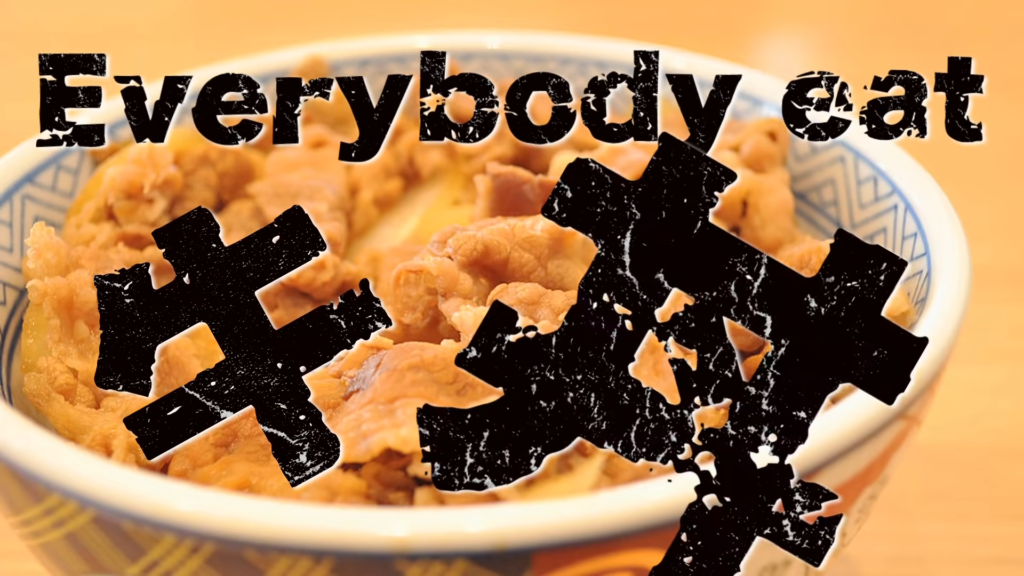
First verse
Gyūdon (牛丼): beef bowl, constructed from gyūniku (牛肉, beef meat). Gyūdon is a staple of Japanese fast food. Gyūdon chain restaurants can be found everywhere across Japan, and offer cheap, filling fares at any time of the day or night. It is probably the most common type of donburi, hence it being first place in the list.
Katsudon (カツ丼): fried pork bowl, constructed from tonkatsu (トンカツ). Tonkatsu is a breaded, deep-fried pork cutlet. For a katsudon, the tonkatsu is cut into slices, put on the rice, then topped with a half cooked egg and sake-based sweet sauce.
Magurodon (まぐろ丼): tuna bowl, constructed from maguro (まぐろ, tuna). The tuna used for the topping is raw. The difference with similar looking types of sushi like chirashizushi is that the rice in the donburi isn’t vinegared.
Oyakodon (親子丼): chicken and egg bowl, constructed from oyako (親子, parent and child). The chicken is topped with a runny, half-cooked egg. The name comes from the fact that the chicken (the parent) is cooked with its child (the egg).
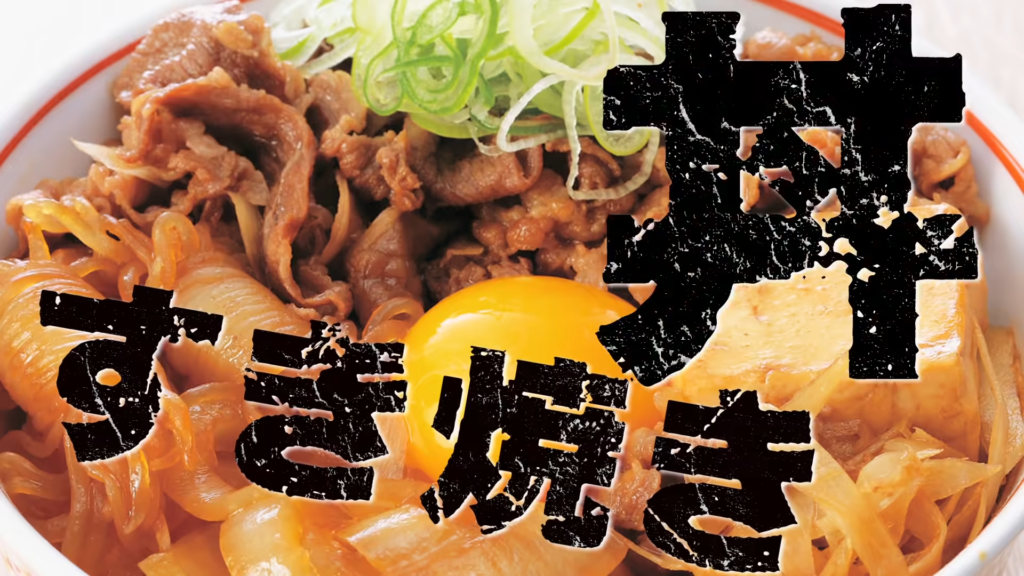
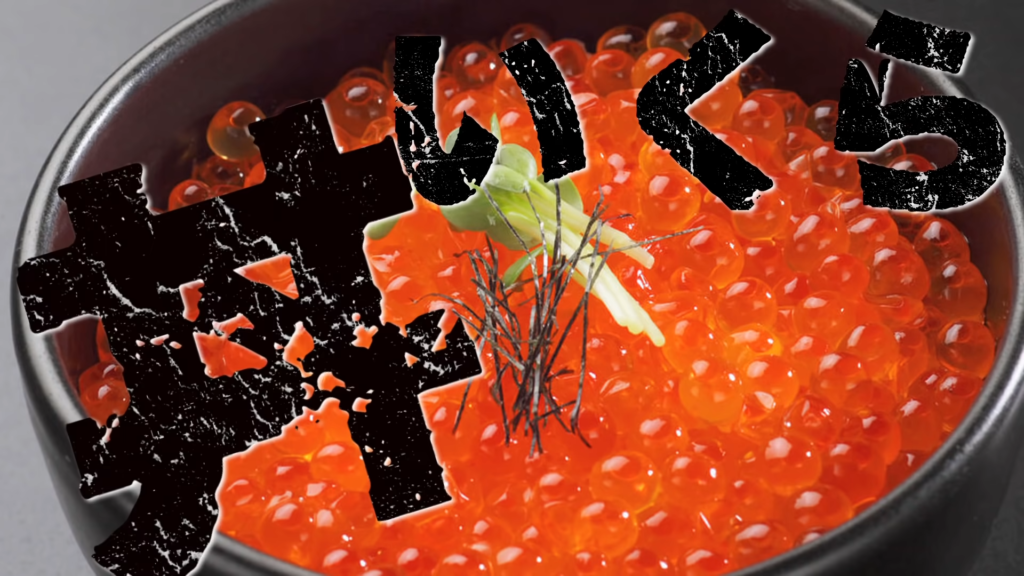
Ikuradon (いくら丼): salted salmon roe bowl.
Tendon (天丼): tempura bowl, constructed from tempura (天ぷら). Tempura is made from seasonal ingredients battered and deep fried. Shrimp, kabocha, eggplant and Satsuma imo are common ingredients. Like the katsudon, the tendon is topped with a sake-based sweet sauce.
Butadon (豚丼): pork bowl, constructed from butaniku (豚肉, pork meat). Slices of pork meat are cooked in a sweet soy sauce to caramelize them.
Chūkadon (中華丼): Chinese-style bowl. Chūka is often used to describe Japanese dishes inspired by Chinese cuisine. In the chūkadon, various ingredients are stir-fried in a soy sauce base and poured on the rice.
Chāshūdon (チャーシュー丼): simmered pork bowl. Chāshū is a pork belly simmered in a thick soy-based sauce, and is one of the most common toppings for rāmen. Consequently, the chāshūdon is commonly found in rāmen shops as a side dish or alternative to noodles.
Sukiyakidon (すき焼き丼): sukiyaki bowl. Instead of dipping the ingredients in the egg, the egg is directly poured on top of the bowl.
First bridge
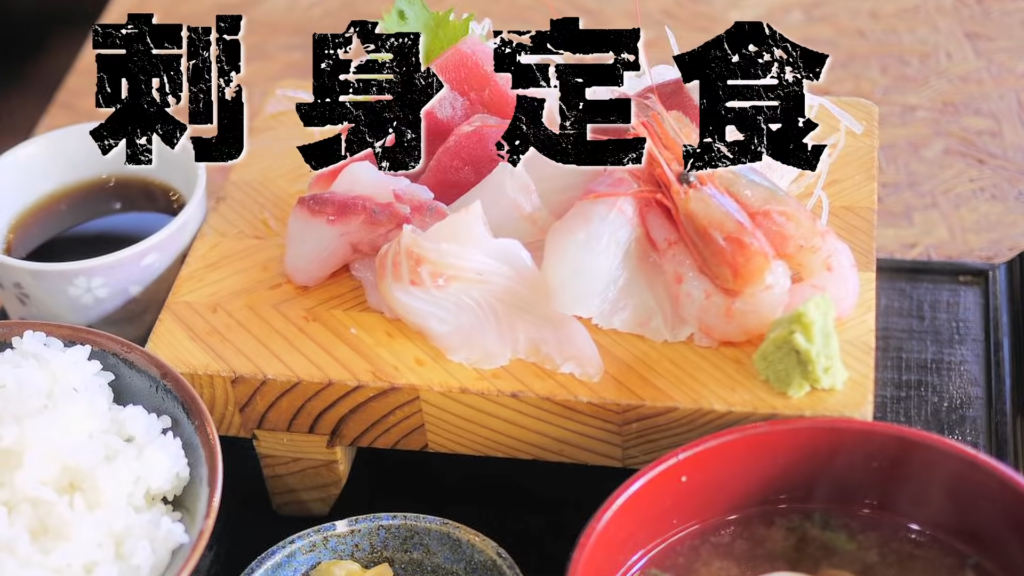
Sashimi teishoku (刺身定食): sashimi set meal. Sashimi consists of fresh, raw fishes (or sometimes seashells or meat) thinly sliced and dipped in soy sauce. It is often served with thin strands of daikon radish, shiso leaves and wasabi.
Karaage teishoku (唐揚げ定食): fried chicken set meal. A common way of eating chicken, the meat is marinated in a sauce, then lightly coated in flour and deep-fried. It is often garnished with shredded cabbage and a slice of lemon to squeeze on the karaage.
Yakishake teishoku (焼き鮭定食): grilled salmon set meal. The fish is seasoned only with salt, and similarly to karaage, fresh lemon can be added.
Sanma no shioyaki teishoku (さんまの塩焼き定食): salt-grilled pacific saury set meal. The fish is coated in salt and cooked whole over charcoal.
Gyōza teishoku (餃子定食): gyōza set meal. Gyōza are dumplings inspired from the Chinese jiaozi and commonly served in izakayas.
Yakiniku teishoku (焼肉定食): grilled meat set meal. Yakiniku restaurants serve the meat raw, and the customers grill it themselves with barbecue grills set in the table. Thin slices of beef loin, ribs and tongues, as well as pork belly and various offals are very popular pieces.
Second verse
Koshihikari (こしひかり): the “King of Japanese Rice”. The most cultivated rice in Japan, it accounts for one third of the country’s total production. Originally from the Hokuriku region, it is sticky and possesses a strong umami flavor.
Kinuhikari (キヌヒカリ): developed in the Hokuriku region as a cultivar less prone to falling before harvest. Its milder flavor makes it popular at sushi restaurants in Western Japan. When cold, it becomes sweeter and retains its softness, so it is also recommended for bento and nigiri.
Mitsuhikari (みつひかり): rare hybrid rice variety developed for high yields and ease of cultivation.
Ikuhikari (イクヒカリ): originating from Fukui prefecture, it is a blend of kinuhikari and koshihikari cultivars. A thick and short stem makes it resistant to typhoons and strong winds, and it is often used for bento and nigiri thanks to it remaining soft even after cooling down.
Hinohikari (ヒノヒカリ): variety from Miyazaki prefecture, it is widely cultivated in the Western parts of Japan.
Yamahikari (ヤマヒカリ): breed meant for mountain cultivation. “Yama” means mountain.
Nasuhikari (なすひかり): variation of the koshihikari rice, from the Nasu highlands in Tochigi prefecture.
Natsuhikari (ナツヒカリ): Kagoshima prefecture rice for cultivation in warm climates.
Yumehikari (ユメヒカリ): one of the first koshihikari-derived blends cultivated in the Kyūshū region.

Yukihikari (ゆきひかり): older breed from Hokkaidō, it is hardly cultivated nowadays.
Kagahikari (加賀ひかり): high yield rice adapted to the flat lowlands of Ishikawa prefecture. It is however vulnerable to diseases.
Fukuhikari (フクヒカリ): cultivated in the mountainous areas of Fukui prefecture.
Churahikari (ちゅらひかり): variety from Okinawa. “Chura” means beautiful in Okinawa dialect. Small grains with a strong flavor.
Notohikari (能登ひかり): derived from the fukuhikari, it is cultivated in the Noto region of Ishikawa prefecture.
Sakihikari (さきひかり): rice developed in Miyazaki prefecture to be cultivated earlier in the year than other late harvest cultivars.

Sasanishiki (ササニシキ): variety from Miyagi prefecture. A light texture, meltiness and mild flavor make it a favorite at sushi restaurants.
Chiyonishiki (チヨニシキ): strong breed mostly cultivated in Fukushima prefecture. Large grains with a soft, mild flavor.
Akinishiki (アキニシキ): derived from koshihikari, cultivated in the Kantō region.
Minonishiki (みのにしき): variety from Gifu prefecture.
Akitakomachi (あきたこまち): popular rice from Akita prefecture, with a fresh flavor and moderate stickiness.
Second bridge
Saba miso teishoku (鯖味噌定食): miso simmered mackerel set meal. Also called saba no misoni (鯖の味噌煮), this is a very common way of preparing this fish. It is slowly simmered in a thick miso soup until its bones are soft enough to eat.
Tempura teishoku (天ぷら定食): tempura set meal. Similar to the tendon (see above). The tempura can be sprinkled with salt or dipped in a light soy sauce.
Sutamina teishoku (スタミナ定食): stamina set meal. Originally a donburi (sutadon), it consists of pork meat marinated in a strong garlic and soy sauce which is then sautéed. Cheap and filling, it provides energy to the eater, hence the name.

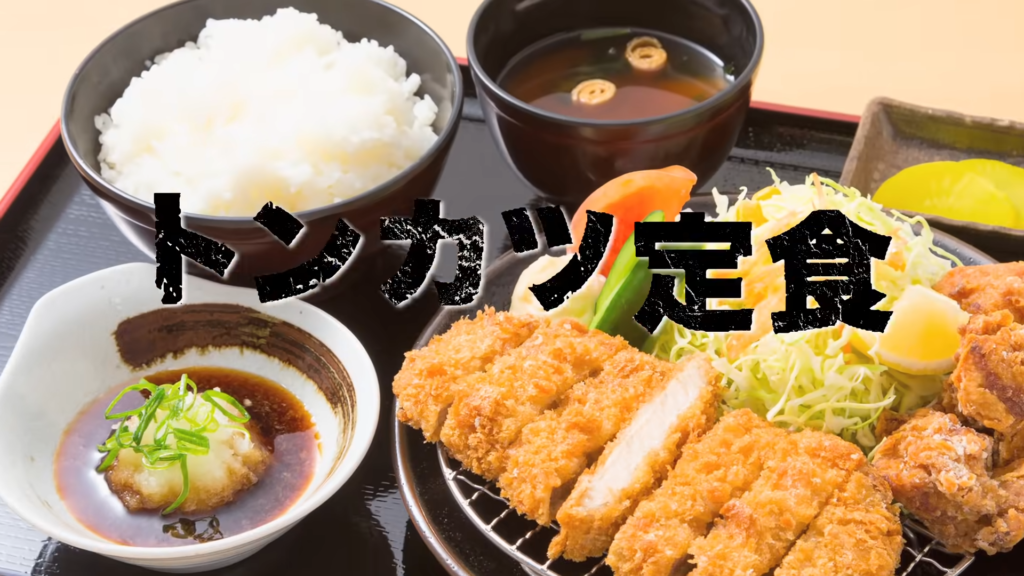
Katsuo no tataki teishoku (カツオのたたき定食): straw-seared bonito set meal. This is a typical way of cooking bonito (or skipjack tuna). It is often served with grated ginger.
Sutēki teishoku (ステーキ定食): steak set meal. The meat is often served sizzling on a cast iron plate with garnishes like corn and potatoes.
Tonkatsu teishoku (トンカツ定食): tonkatsu set meal. Similar to the katsudon (see above). It is served with shredded cabbage and a thick tonkatsu sauce.
Details from the music video
The music video has three main settings. The first one is the band themselves performing the song in a studio. The second one consists of dancers wearing tsunagi overalls and hats typical of Japanese agricultural workers. Finally, the main story follows a middle aged salaryman (office worker) coming home from work and stopping at an izakaya on the way. Visibly distraught, he orders round after round of drinks, much to the concern of the owner. In the end, the latter offers a bowl of white rice and some yakitori chicken skewers. At first surprised, the salaryman ends up happily swallowing the food. The video ends with the office worker, visibly relieved, thanking the owner for the meal.

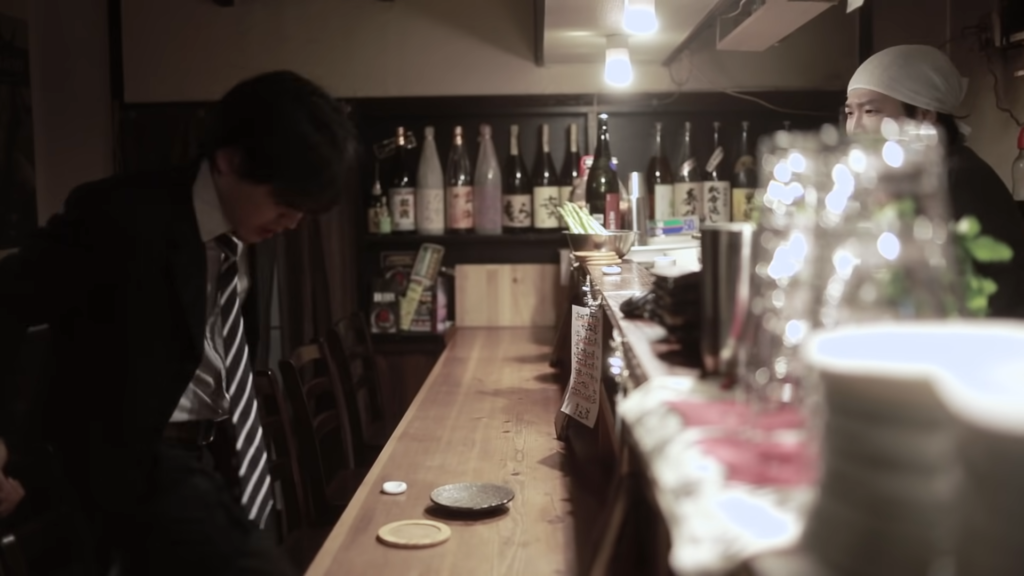


Of note in the video, at 2:42 the dancers are moving in such a way that their arms, legs and trunks make the rice character 米. At 3:19, the lips of the customer can be read, and he is of course thanking the owner with: “Gochisō sama”!